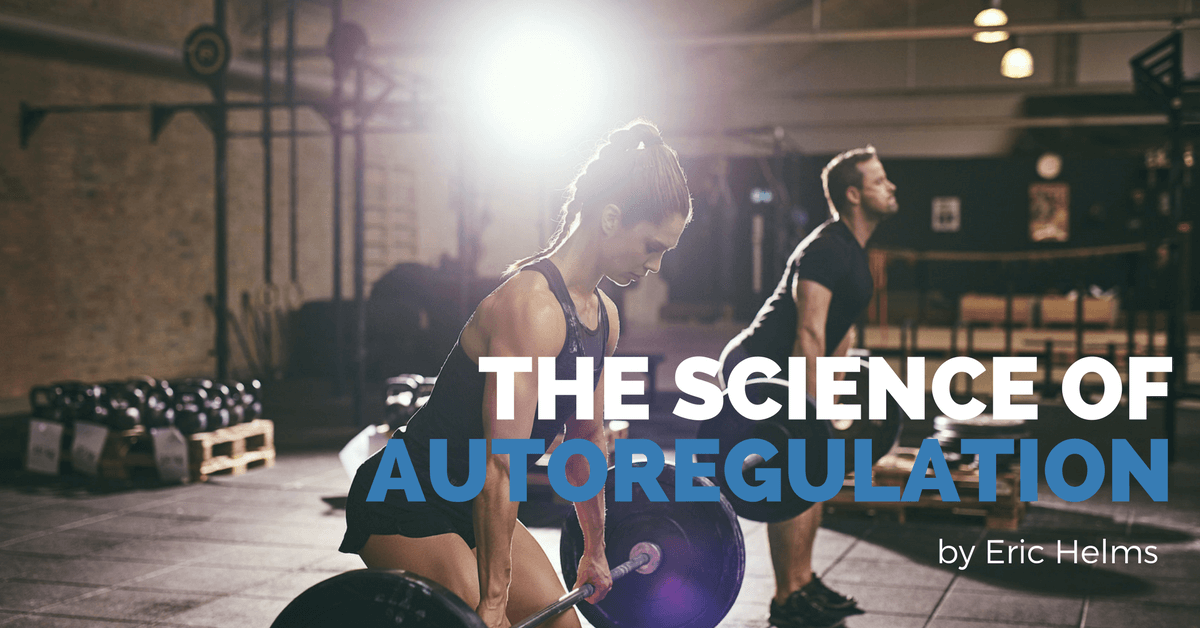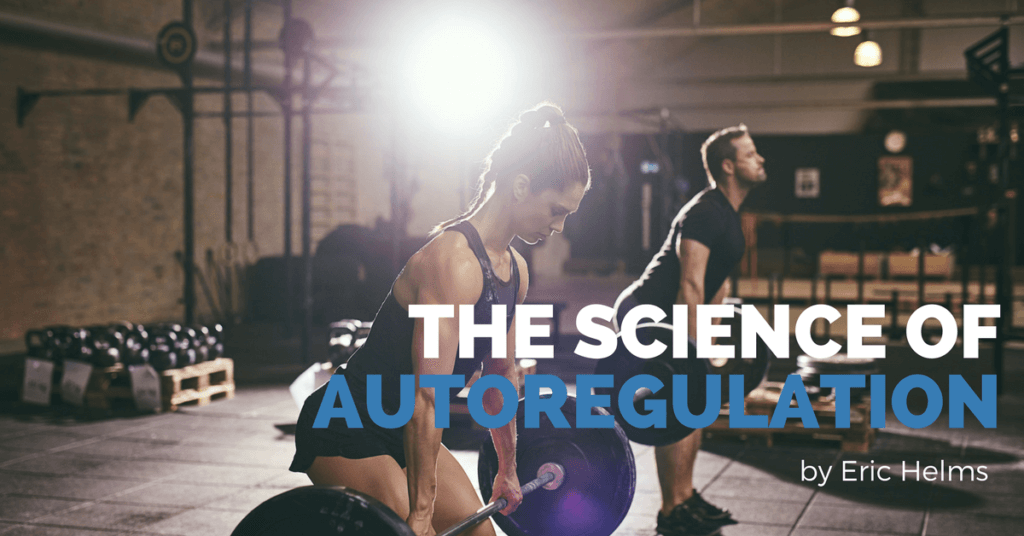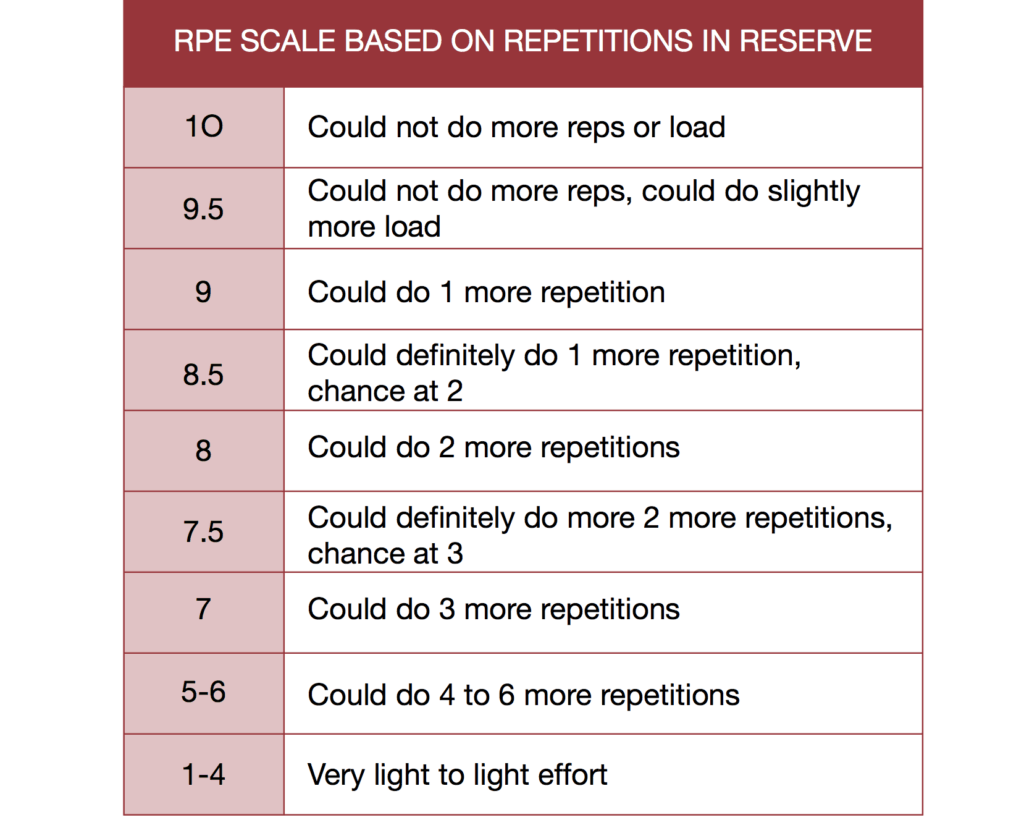Note from Greg:
This guest post comes from Eric Helms. If you don’t know Eric, he’s a successful coach for 3D Muscle Journey, an INBA natural pro bodybuilder, a scientist who’s going to defend his Ph.D. dissertation in the next month or two, and an all-around brilliant human being. If you didn’t know already, he’s one of my partners (along with Dr. Mike Zourdos) for MASS – a monthly research review breaking down the latest science that’s directly relevant to strength and physique athletes. I reached out to Eric to be a part of MASS because he’s at the forefront of this field, as I think you’ll be able to tell from this article.
Autoregulation has been a buzzword in the powerlifting, S&C, and fitness communities for a while now, and as is often the case when something gains popularity, the hype surrounding it generates misunderstandings and over-complications. Thus, let me just clarify what autoregulation is and isn’t. Autoregulation is not a stand-alone, specific type of training. Autoregulation doesn’t have to be complicated, and autoregulation does not require the use of rating of perceived exertion (RPE) scores (although they can be used, and we’ll discuss them). Rather, autoregulation is simply a systematic approach to implementing something every trainer worth their salt knows is of supreme importance: the principle of individuality.
Now if you are someone who thinks training should look the same for everyone, a) wow…I didn’t think you existed, but b) more importantly, read this great article by Greg that goes in depth as to how people differ not only in terms of how well they respond to training, but also in what type of training they respond best to. (Spoiler alert: People adapt at different rates, to different magnitudes, and the best training approach for one person might be pretty crappy for someone else.) Autoregulation, simply put, is just a structured approach for embedding a respect for individual variation within a program.
In addition, autoregulation has a few other philosophical underpinnings:
- Your readiness to train, recovery status, and resultant performance is affected by a multitude of factors independent of your current training session that you may not have full control over (such as nutrition, sleep, mood state, prior training, menstrual cycle phase, emotional stressors etc.).
- Lifters themselves can become a reliable source of information regarding their own readiness to train and recovery-status if they are given the proper tools and training (which is an important “if”).
Some of the pushback against certain forms of autoregulation comes in the form of the criticism of their subjective nature. Specifically, I’ve heard the argument that training based on how you feel can easily become a rationalization for training hard when you shouldn’t, or wussing out when you should be going harder.
Believe it or not, I completely agree with this criticism. Simply “training by feel” is something most people don’t do well, in my experience. Crazy bodybuilders like myself end up with injuries and an unproductive ratio of fatigue to fitness, and those prone toward being overly cautious, or even lazy, tend not to do enough. It takes a unique combination of self-awareness, aggression, self-control, drive, patience, experience, and humility to be successful “training by feel” in a completely self-guided, subjective manner. To be fair, I can think of a handful of elite athletes who accomplish this, but this isn’t reproducible. Rather, their ability to do so is a condition of those elite athletes being who they are and having done what they do for a long time.
So, to go back to what autoregulation is and isn’t, let me be clear, autoregulation using subjective rating scales is not “training by feel.” At the same time, I would challenge those who would criticize this type of autoregulation for its subjective nature. The issue is not the subjectivity of these autoregulation methods; the issue is the reliability and validity of these methods. Meaning, we must ask: Is the data being used consistently reported in the same way under the same conditions (reliable) and is it representative of actual readiness or recovery (valid)? The assumption by many who critique autoregulation under the strawman argument that it is the same as “training by feel” is that all subjective data is inherently less valid and less reliable than objective data. But simply put, that is not the case. In fact, subjective questionnaires beat out the objective training monitoring tools we currently have when those questionnaires have been tested to be valid and reliable.
You read that correctly. In the review I just linked, it was found that well-designed subjective questionnaires relating to readiness and fatigue were more sensitive to alterations in training stress than measures of hormonal status, immune function, muscle damage, inflammation, and heart rate and variance measurements. This is not to say these measurements are not useful – I think they are. It’s just that the “recipe” that goes into improved performance is influenced by neurological, psychological, and physiological factors, which each of the objective measures can only obtain a piece of. In contrast, a subjective self-analysis (if valid and reliable) can assess the aggregate and therefore more closely approximate readiness and recovery.
So now that I’ve clarified what autoregulation is and isn’t, given a broad rationale for the utility of autoregulation, and addressed some of its criticisms, it’s time to get down to brass tacks. Let’s talk about one of the more accessible, easier-to-implement autoregulation concepts common in strength training circles: RPE-based training.
As a brief introduction, RPE was introduced by Gunnar Borg nearly 50 years ago as a way to quantify perceived exertion during exercise. He initially created a 6-20 scale that roughly scaled to heart rate (resting at ~60bpm, max at ~200bpm) and then created a simplified 1-10 scale which is more widely used today. The scores on these scales are determined by a subjective description of fatigue (no exertion at all, very light, somewhat hard, very hard, maximal exertion, etc.). This is perfectly fine, like we talked about before, if the rating is reliable and valid. To ensure that is the case, researchers should use a process called “anchoring,” whereby they have the participant exercise at various intensities, and then have them associate each level of effort with an RPE score. If anchoring does not occur, the person will frame the subjective descriptor in reference to what they have previously experienced.
This is probably why un-anchored participants in this study recorded RPE scores between 6.1-8.8 out of 10 when taking sets at 60, 80, and 90% of 1RM to failure on the bench press, back squat, and biceps curl. You are probably thinking, “Why would they have reported a 6, 7, 8 or 9 RPE when they went to failure and literally could not have performed more repetitions? Shouldn’t that be a 10 RPE?” Well, it’s likely because they compared “maximal exertion” (a 10 RPE) to what they’d experienced previously in life, instead of what they could have done in the context and confines of the set they performed. If someone who was a marathon runner participated in the study, they might have thought about what the last mile felt like in their hardest race and considered that a 10 RPE. Someone who had served in the Marines might have thought about how they felt during the final hours of the crucible. In comparison to either, a set of curls to failure just won’t rate as high.
This is where Mike Tuchscherer comes in. For those who don’t know, Mike is an IPF champion and one of the most respected modern powerlifting coaches, having worked with powerlifters up to and including those at the highest level. More importantly, in my opinion, he is a preeminent thought leader in the sport and was the first to introduce a modified RPE scale in his book The Reactive Training Manual, where the RPE scores are specifically determined based on how many more repetitions you believe you could perform before reaching failure within that set.
The beauty of this simple scale is that it embeds anchoring into the scale that anyone experienced with training near failure understands. Also, it allows load to be individualized for the desired stress level. Percentage of 1RM, while very useful, is problematic in that at moderate percentages (60-80% 1RM) there are huge differences between individuals with regard to how many repetitions can be performed. If one person can do 9 reps at 70% of 1RM and another can do 15 reps at 70% of 1RM, they will experience a 3x8x70% protocol very differently. However, if they are both given 3x8x6-8 RPE, they can self-select the appropriate load and they will train at the same relative distance from failure (or certainly closer than had they used % 1RM).
Research has also borne out the utility of this modified scale in recent years. In fact, the focus of my PhD was on the specific utility of the repetitions in reserve-based RPE scale for resistance training. Let me summarize below what science we currently have on the scale:
- Bodybuilders can estimate repetitions to failure accurately during bench press and squat, while traditional Borg RPE is submaximal even when training to failure. (Source)
- Repetitions in reserve-based RPE scores have strong inverse correlations with velocity; as RPE rises and a set gets closer to failure, bar speed slows, demonstrating its validity. (Source)
- Powerlifters attempting to reach a 1RM on the squat, bench press, and deadlift achieve similar RPE values at maximum among the lifts, while velocity is lift-specific. (Source)
- Powerlifters can self-select a load they believe will be a specific RPE for a given number of reps with a high degree of accuracy (the final RPE is close to what they expected it would be with that load). (Source)
- Trained and untrained men and women performing the machine chest press can accurately gauge repetitions remaining when they are 0-5 reps from failure. Men can accurately gauge repetitions remaining when they are 0-5 reps from failure on the leg press; women, when they are 0-3 reps from failure. (Source)
- It is more difficult to assess how many repetitions you can perform before reaching failure when you are performing a high-repetition set until you get very close to failure (9 RPE). (Source)
- You can autoregulate the volume performed on an exercise by setting an “RPE stop.” For example, if you set an “RPE stop” 2 RPE points higher than the initial set’s target, you would perform more sets than if you set an RPE stop 1 RPE point higher. For example, if the first set was prescribed as 6 reps at 7 RPE, after completing this set, you would continue to perform sets at the same load until reaching your RPE stop on a subsequent set. Naturally, allowing RPE to rise 2 points would result in more sets than allowing it to rise 1 point. (Source)
- When all else is equal, a program that prescribes load purely with RPE in trained lifters, compared to one that prescribes load purely with percentage 1RM, has a higher probability of resulting in slightly greater strength gains (data not yet published).
Now, I know that’s a lot of information to take in, and it is largely conceptual. But, I hope this helps you understand what autoregulation is and isn’t as well as some of the fundamentals of and research on the repetitions in reserve-based RPE scale. If you are intrigued and would like a more practical tutorial of how it can be implemented within a programming strategy, I would highly recommend Dr. Zourdos recent article on load progression, which includes how to use RPE for this purpose. If you really want to dive in, consider a subscription to MASS where we do in-depth videos on how to program and autoregulate training.
Thanks for reading, and until next time.
Read Next
Share this on Facebook and join in the conversation.
If you’re interested in more research-backed training and nutrition information, you can download the first issue of our research review here.







